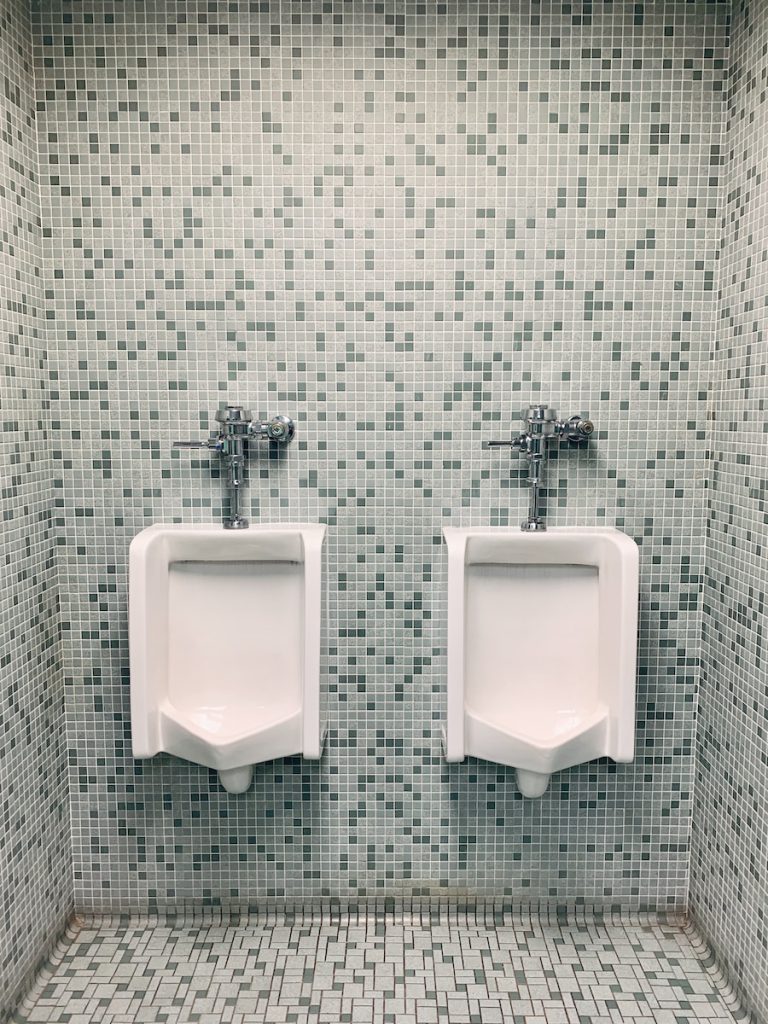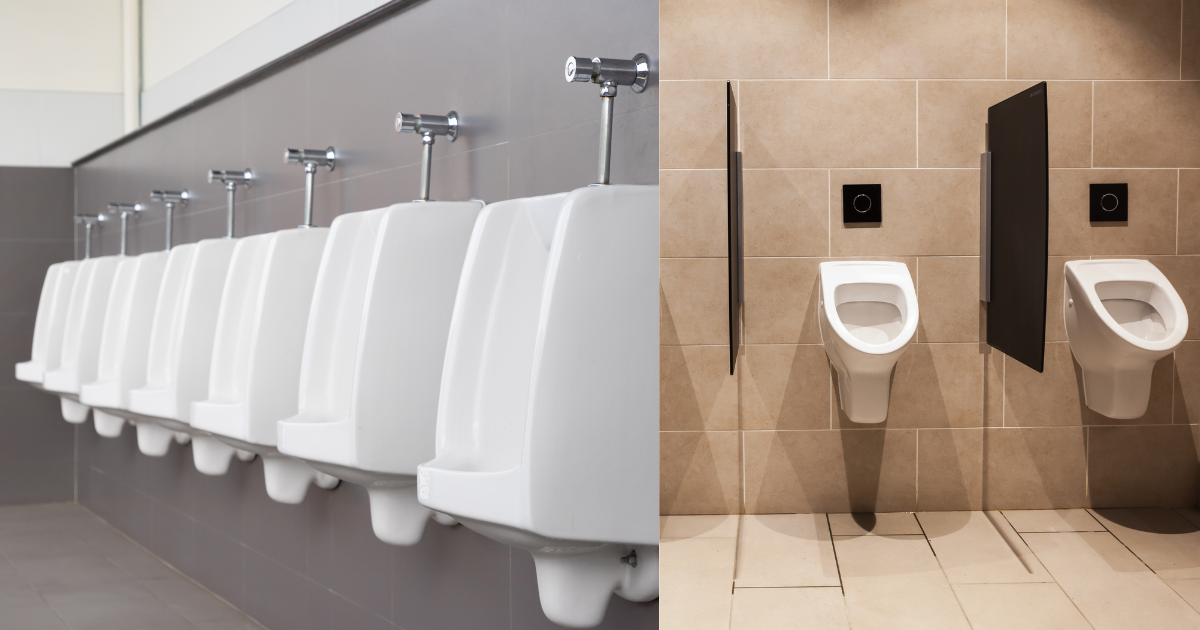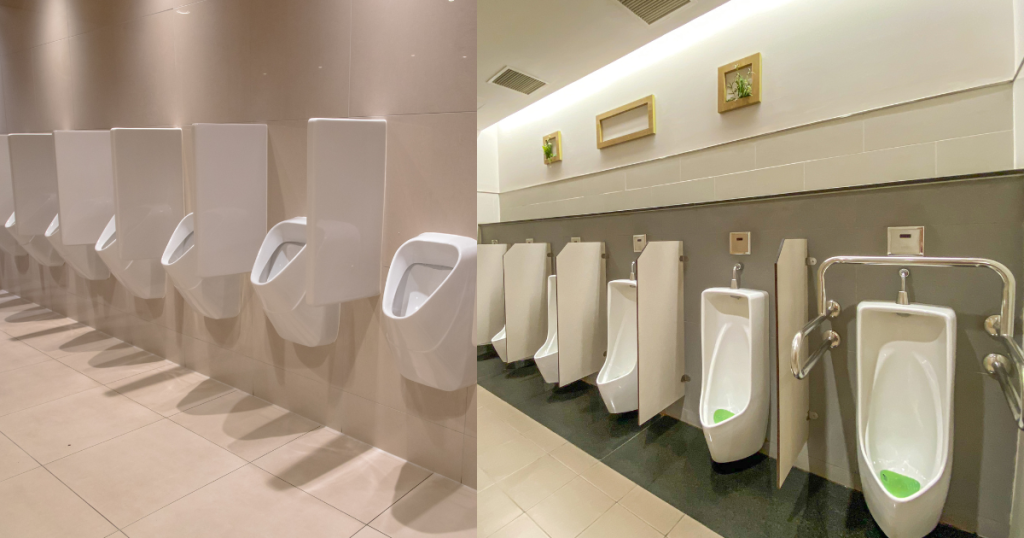Looking for a place to relieve yourself? Look no further than the humble urinal. These unsung heroes of public restrooms have come a long way over the years.
From ancient civilizations to modern innovations, urinals have stood the test of time. Discover the evolution of urinals, famous designs throughout history, and the psychology behind their strategic placement.
Explore different cultural perspectives and even artistic approaches to urinal design. Get ready to flush away your preconceptions and dive into the fascinating world of urinals.
Key Takeaways
- Urinals have evolved and developed over time, influenced by technological advancements such as the invention of flush toilets, waterless urinals, and antibacterial materials.
- Famous and innovative urinals, such as ancient Roman public urination areas and Marcel Duchamp’s controversial installation ‘Fountain’, have challenged societal norms and transformed the perception of urinals as a form of artistic expression.
- Modern urinals feature various design elements and features, including waterless options, interactive capabilities, sustainable materials, ergonomic designs, and high-tech features like touchless controls and automatic flushing.
- The placement and design of urinals can impact user comfort, privacy, and psychological factors, while cultural perspectives and artistic approaches also influence urinal design and etiquette norms. The future of urinal technology includes smart sensors, odor control, self-cleaning systems, touch-free operation, and sustainable options for environmental conservation.
The Evolution of Urinals
You’ll find that the evolution has greatly influenced their design and functionality.
Historical origins of urinals can be traced back to ancient civilizations, where communal toilets were used. However, it wasn’t until the 19th century that the modern urinal as we know it today began to take shape.
Technological advancements played a significant role in the evolution of urinals. The invention of flush toilets and the introduction of waterless urinals revolutionized their functionality and hygiene. Environmental considerations also came into play, with the development of water-saving urinals that help conserve this precious resource. Sanitary improvements, such as the use of antibacterial materials and touchless technology, have further enhanced cleanliness.
Moreover, the evolution has had social implications, as their design and placement in public spaces have been influenced by cultural norms and gender inclusivity.
Famous Urinals Throughout History
Take a moment to explore the fascinating history and cultural significance of famous urinals throughout history. These installations have not only served a practical purpose but have also left a mark on society.
From the historical significance of ancient Roman public urination areas to the iconic designs of Marcel Duchamp’s controversial installations like ‘Fountain,’ urinals have sparked conversations and challenged societal norms. These famous urinals have become symbols of artistic expression and have pushed the boundaries of what society deems acceptable.
But the story of urinals doesn’t end there. In modern times, innovative designs have emerged, transforming the way we think about these everyday fixtures. From waterless urinals to ones that generate electricity, these designs are revolutionizing the way we approach sustainability and functionality.
Innovative Designs in Modern Urinals

By exploring innovative designs in modern urinals, you’ll discover how functionality and sustainability are being revolutionized.
Waterless urinals have emerged as a popular solution for reducing water consumption and minimizing maintenance. These urinals use advanced filtration systems to separate urine from water, eliminating the need for flushing.
Interactive urinals take the user experience to a whole new level, incorporating features like LED lights, motion sensors, and even games that engage users while they relieve themselves.
Sustainable urinal designs focus on using eco-friendly materials and implementing water-saving technologies, making them environmentally conscious choices.
Ergonomic urinals prioritize user comfort, with designs that cater to different body types and heights.
High-tech urinal features, such as touchless controls and automatic flushing, enhance hygiene and convenience.
With these advancements in mind, let’s now delve into the psychology of urinal placement.
The Psychology of Urinal Placement
Think about how urinal placement influences behavior and perception in public restrooms.
- Urinal etiquette: Proper behavior and social norms when using urinals.
- Urinal privacy: The level of privacy provided by the design and placement of urinals.
- Urinal proximity: The distance between urinals and how it affects comfort and personal space.
- Urinal psychology: The psychological impact of urinal placement on individuals.
- Urinal design principles: The principles that guide the design and placement of urinals for optimal functionality and user experience.
The psychology of urinal placement is an important consideration when designing public restrooms. The placement of urinals can influence how individuals behave and perceive the space.
Proper urinal etiquette is crucial to maintain a comfortable and respectful environment. Privacy is also a key factor, as individuals may feel uncomfortable if urinals are too exposed or too close to each other.
The proximity between urinals should be carefully considered to ensure adequate personal space. Understanding the psychological impact of urinal placement can lead to the development of better design principles that prioritize user comfort and satisfaction.
Cultural Perspectives
Have you ever considered the cultural differences in the usage and design of urinals? Urinals may seem like a mundane fixture, but their cultural significance can’t be overlooked. Different societies have their own etiquette norms when it comes to using urinals, with some cultures emphasizing privacy and others prioritizing efficiency. Gender differences also play a role, as urinals are often designed for men, leaving women with limited options.
Cleanliness concerns are another factor, as some cultures prioritize hygiene and invest in advanced technologies to keep urinals clean. Privacy issues also come into play, with some countries providing individual stalls for maximum privacy.
Transitioning into the subsequent section about artistic approaches to urinal design, it’s fascinating to explore how these cultural perspectives can influence the artistic and creative aspects of urinal design.
Artistic Approaches
As you delve into the world of artistic approaches to urinal design, you’ll discover how form and function can merge to create unique and captivating installations. These artistic expressions go beyond the traditional concept of a urinal and bring a new level of creativity to public restrooms.
Here are some examples of artistic approaches to urinal design:
- Urinal sculptures
- Urinal paintings
- Urinal installations
- Urinal mosaics
- Urinal graffiti
These artistic interpretations not only add aesthetic value to the space but also challenge societal norms and spark conversations. They transform a mundane necessity into a thought-provoking and visually stunning piece of art.
As the boundaries of urinal design continue to be pushed, the future of urinal technology holds exciting possibilities for even more innovative and interactive experiences.
The Future of Urinal Technology
You’ll be amazed by the advancements in urinal technology that await us in the future. From smart urinals that monitor water usage to waterless urinals that conserve resources, the future of urinal technology is paving the way for sustainability and improved hygiene. Automated cleaning systems will ensure that urinals are always clean and fresh, eliminating the need for manual cleaning and reducing the spread of germs. Take a look at the table below to see some of the exciting features that future urinals may offer:
| Feature | Description | Benefits |
|---|---|---|
| Smart Sensors | Monitors water usage and leaks | Water conservation |
| Odor Control | Neutralizes unpleasant odors | Improved hygiene |
| Self-Cleaning | Automated cleaning and sanitizing | Reduced maintenance |
| Touch-Free | Hands-free operation | Minimized germ transmission |
| Sustainable | Waterless or low-flow options | Environmental conservation |
With these advancements, urinals of the future will not only improve hygiene but also contribute to a more sustainable world.
Read More: Construction Of Commercial Fit-Outs For Business
Conclusion
So next time you’re standing in front of a urinal, take a moment to appreciate the evolution and innovation behind this everyday fixture.
From famous urinals throughout history to modern designs and cultural perspectives, the world of urinals is truly fascinating.
Did you know that the average person spends 20,000 minutes of their life using a urinal? That’s over 13 days!
Urinals have come a long way, and who knows what exciting advancements the future holds for this essential piece of bathroom technology.







